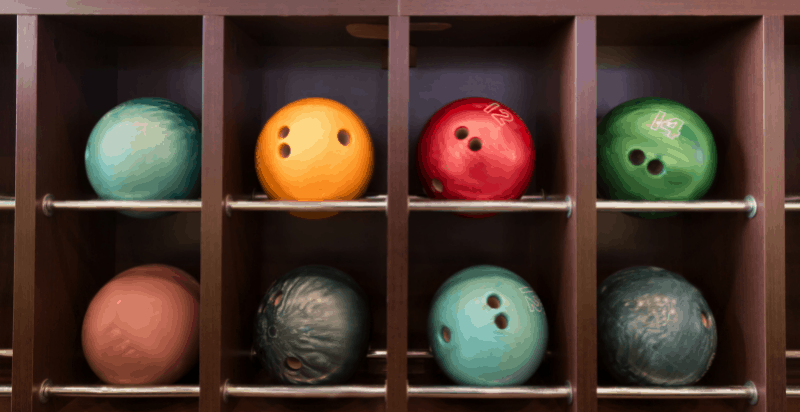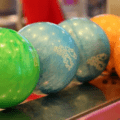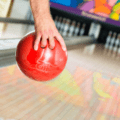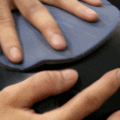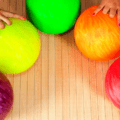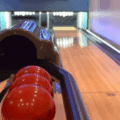So, you’ve watched the film The Big Lebowski and you’ve picked up the bowling bug. But before shoes and shirt, there’s one important piece of equipment that every bowler needs - a bowling ball.
For your average Saturday afternoon or birthday party bowler, you just show up at your local lane and use the balls they provide.
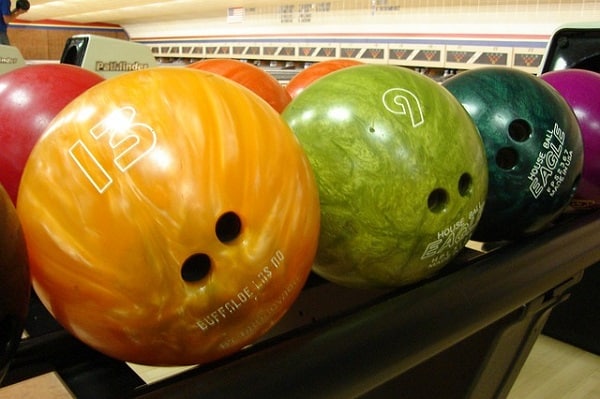
However, bowling relies on consistency and using different balls each time you play will not give you the consistency you need for practicing that super-smooth motion.
But aren’t all bowling balls that same globe-like shape? Yes, but the material they’re made out of can differ substantially, which will ultimately affect the price.
But how much will a bowling ball set you back? First you have to ask yourself some key questions: are you a newbie bowler just starting out? Are you hitting the lanes a few times a week? Are you an intermediate player looking to go pro?
If you’re facing the ten pins for the first time, you might not want to splash out too much on your first ball. But if you’re aware of terms like ‘hooking’ and ‘curving’, you might be more than just a hobbyist that is willing to spend the dough to get to a professional level.
Let’s look at the range of bowling balls available, how much they’ll set you back and which one you might want to buy if you want to be shouting “Strike!” more than anyone else.
Types of bowling ball
A bowling ball is like a dog - they come in various different species. The material will make a lot of difference to you when you’re in the lane and will affect the overall pricing.
Here a few of the main ball types and how much you can be looking to spend on them.
Plastic or Polyester
Plastic are the standard issue for your bowling beginner - teenagers or the casual weekend player - and will usually set you back $40 to $60.
Plastic and polyester balls are made out of a cheaper material, hence the cheap price tag. They also don’t have the customized weighted core that gives a pro ball its ‘hook’ - these balls will simply go straight.
These balls also have a harder and less porous coverstock, but this results in a general lighter ball and far less friction on the lane.
These plastic types are for those that don’t really fancy bowling that often, but may want the luxury of bringing their own ball to a local lane. Intermediate bowlers might also use plastic balls as a backup to avoid wear and tear on their main professional ball.
Vanity
A vanity bowling ball is exactly what it might suggest - a customized ball that reflects you!
Whilst not drastically different from a plastic/polyester ball, these balls feature a customized exterior - whether it’s a bowling team logo, the name of your dear old mum or even an Angry Birds logo.
This suped-up casual ball comes with a much higher price of $75 to $150, but your own unique, incomparable ball will lend you that extra confidence and focus for when you hit the lane.
Vanity balls are the perfect option for those looking to join a bowling team or a bowling league, as they can be painted with your particular team colours. One for the more serious hobbyist!
Entry-Level Performance
One step up from your plastic bowling ball, one of its key features is its weighted symmetrical or asymmetrical core that leads to different weight distributions that can be tailored to your particular bowling style.
These balls come in at around the same price as a vanity ball at $75 to $150 and come with the same customizable skins. They give more ‘hook’ than your vanity balls, however, they lack the punch of the high performance balls.
These are really for big-league beginners or those looking to transition from casual to serious playing. With these, you can have some of the pro features without having to shell out a pro price for them!
High-Level Performance
These balls are for the big-leaguers, top-of-the-line bowling balls that will give you optimum performance based on your bowling style.
Complete with custom symmetrical or asymmetrical cores - weighted discs that can offset the loss of balance that finger holes can create - and coverstocks that affect the ball’s resistance, these pro balls are priced anywhere between $150 to $250, with some top-tier balls being priced at $300.
The differing range of coverstocks - plastic, urethane and reactive resin - will result in different frictions going down the lane and are better suited to advanced bowlers who consider the ‘hook’ and ‘curve’ of the ball as it hits the pins.
These top-level balls come in a variety of top-name brands, which will certainly send a message to other bowlers that you know your stuff and take your bowling very seriously indeed!
Additional costs
When it comes to bowling, finger holes are essential, but if you want to take bowling to a professional level, finger hole placement will really affect how the ball moves down the lane and will factor as an additional cost of $50 to $75 on a customized ball.
In addition to finger hole size and placement, you can also invest in bowling gloves and a bowling bag. Top rated bowling gloves range anywhere between $10 and $20 and are recommended if you want to go the extra distance to improve your game.
What do you need to think about when buying a bowling ball?
Some of you might have read the above information and been ‘hooked’ closer towards the bowling ball you think is right for you. However, for those still scratching your heads, remember to ask yourself these questions before handing over cash.
Skill Level
Your skill level is so important when deciding which type of ball is best suited for you. If you have no clue as to the difference between a ‘hook’ or a ‘curve’ then you’d be better suited to a beginner ball.
Remember: buying an expensive top-of-the-range bowling ball doesn’t automatically make you a better bowler.
How Often Do You Bowl?
Is bowling a treat that you enjoy once every two weeks? Or are you down at the lanes honing your ten-pin skills a few times a week? Your bowling frequency will help you determine how much money you should be spending on a bowling ball.
If you play for fun, spending a thick wedge on all the bowling paraphernalia under the sun is probably not the best route to go down. If you don’t care much for ‘hooking’, stick to the straight-shooting cheap balls!
If you are transitioning from casual to intermediate or professional, you will want to spend a little more on a bowling ball that will ultimately improve your score on the lanes. Gloves and a bowling bag will also go some way to making you king or queen of the pins!
Your Bowling Budget
As you have read above, a bowler’s budget can hit the $300 mark, and might go even higher with the added accessories. If you look at these prices and have a shrinking feeling in your gut, that should be a sign that your bowling commitment might be lower than you first thought!
The right bowling ball is one that helps you rather than hinders you! Buying a ball that is too heavy or has the wrong finger hole size will actually do you more harm than good!
Keep the prices low by shopping online. Non-professional online bowling ball sellers can afford to knock something off the price as they don’t have to pay so much to keep a store running.
Some bowling ball sellers might even waver the additional costs, such as finger hole drilling and customization, if you decided to opt for a mid-range bowling ball - don’t be afraid to negotiate!
Bowling bags and gloves are nice cosmetic touches, but are really only necessary if you’re considering taking your bowling to a more professional level.
Final thoughts
Hopefully the list above will give bowlers some insight into what should be considered when buying a bowling ball.
Plastic and vanity balls will be for relative newcomers and those not seeking to progress bowling beyond anything more than a fun hobby.
High-performance bowling comes with a much higher price tag and you may not be willing to spend the money to get there. However, online shopping can keep the costs down and help ease your transition into high-end serious bowling.
Whether you’re a total newbie or a ten-pin whizz, identifying your skill level will go some way to helping you pick out your bowling ball, as you will be able to better judge what expenditure will improve your game significantly and which will be totally unnecessary!
Researching coverstocks, cores and customizable exteriors will also help you pick out the best bowling ball for you. Always remember that YOU are the person buying the ball and that certain features can enhance your strengths in the lane.

I’m Lia and I love playing games. I started this site to share things with friends and they encouraged me to post more and now I’m trying to share things with the world – indoor and outdoor sports, and board and bar games. I write about things like Bocce, Croquet, Billiards, Darts and other fun ways to enjoy time with your friends and family!

